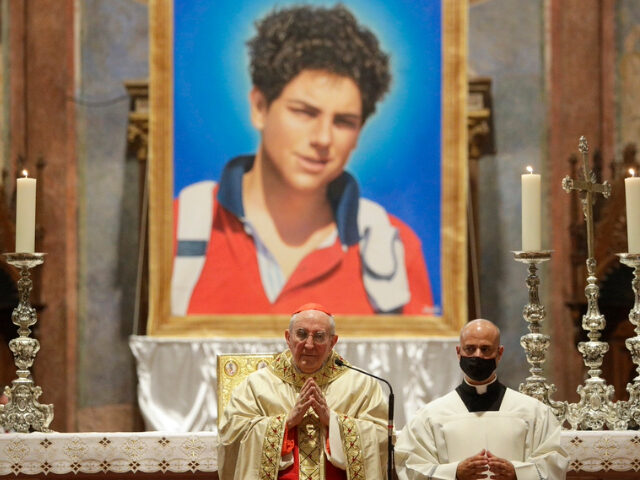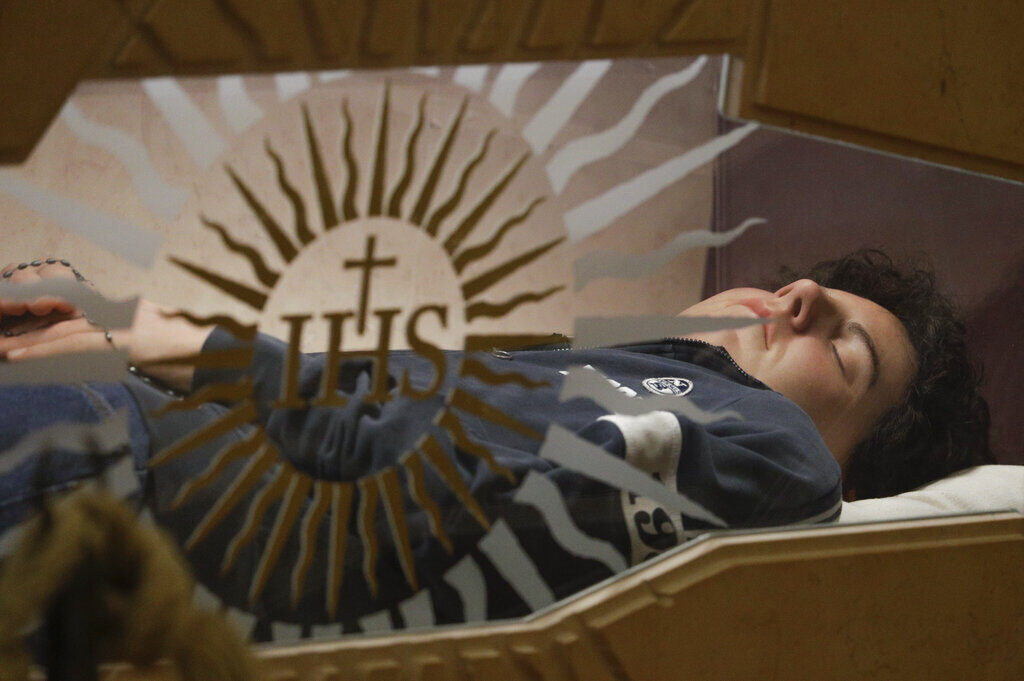‘Patron Saint of the Internet’ to Become First Millennial Canonized by Catholic Church
 AP Photo/Gregorio Borgia, File
AP Photo/Gregorio Borgia, File
ROME — Pope Francis has recognized a miracle attributed to Blessed Carlo Acutis, clearing the way for him to become the first millennial saint of the Catholic Church.
Known affectionately as the “patron saint of the Internet,” Carlo was born on May 3, 1991, in London, England, grew up in Milan, and died on October 12, 2006, in Monza, Italy, succumbing to leukemia at the age of 15.
Diagnosed with Leukemia in 2006, Carlo made a video in which, smiling, he said he was ready to die and asked to be buried in Assisi, the home of Saint Francis. The boy’s wish was granted, and his mortal remains were laid to rest there when he died shortly afterward.
In 2020, Pope Francis traveled to Assisi for the beatification ceremony that set Carlo on the road to sainthood.

Ffiteen-year-old Carlo Acutis, an Italian boy who died in 2006 of leukemia, lies in state ahead of being beatified by Cardinal Agostino Vallini in Assisi, Italy, on October 10, 2020. (AP Photo/Gregorio Borgia)
Along with other requisites, the Catholic Church requires an authenticated miracle attributed to the intercession of a beatified individual in order to pass to canonization, at which point the Church recognizes the person as a saint.
On Thursday, Cardinal Marcello Semeraro, Prefect of the Vatican’s Office for the Causes of Saints, met with Pope Francis, who approved the necessary miracle for the canonization of young Carlo.
A Costa Rican woman named Liliana traveled to Assisi in 2022 and prayed for her daughter Valeria at Blessed Carlo’s tomb.
Valeria had fallen off her bicycle in Florence, where she was attending university. The fall resulted in severe head trauma, which required craniotomy surgery and the removal of the right occipital bone to reduce pressure on her brain.
Doctors said the young woman had a very low chance of survival.
On July 8, the day Liliana made her pilgrimage to Carlo's tomb in Assisi, the hospital informed her that Valeria had begun to breathe spontaneously. The following day, she began to move and regain her speech.
Ten days later, a CAT scan showed that Valeria’s hemorrhage had completely disappeared, and, the following month, Valeria was moved to rehabilitation therapy.
On September 2, Valeria and Liliana together made a pilgrimage to Assisi to thank Blessed Carlo for his intercession.
In his post-synodal apostolic exhortation Christus Vivit (Christ Is Alive), addressed to young people, Pope Francis held up Carlo Acutis as a model for how to use the Internet and communications media for good.
While the digital world can expose people to the risk of self-absorption, isolation, and empty pleasure, Francis wrote, there are young people who show creativity and even genius in using the media, such as Carlo Acutis.
“Carlo was well aware that the whole apparatus of communications, advertising, and social networking can be used to lull us, to make us addicted to consumerism and buying the latest thing on the market, obsessed with our free time, caught up in negativity,” Pope Francis continued.
“Yet he knew how to use the new communications technology to transmit the Gospel, to communicate values and beauty,” he said.
In the decree, released on Thursday, Pope Francis said he will convoke a consistory of Cardinals to deliberate the canonization of Blessed Carlo Acutis.
Source link

